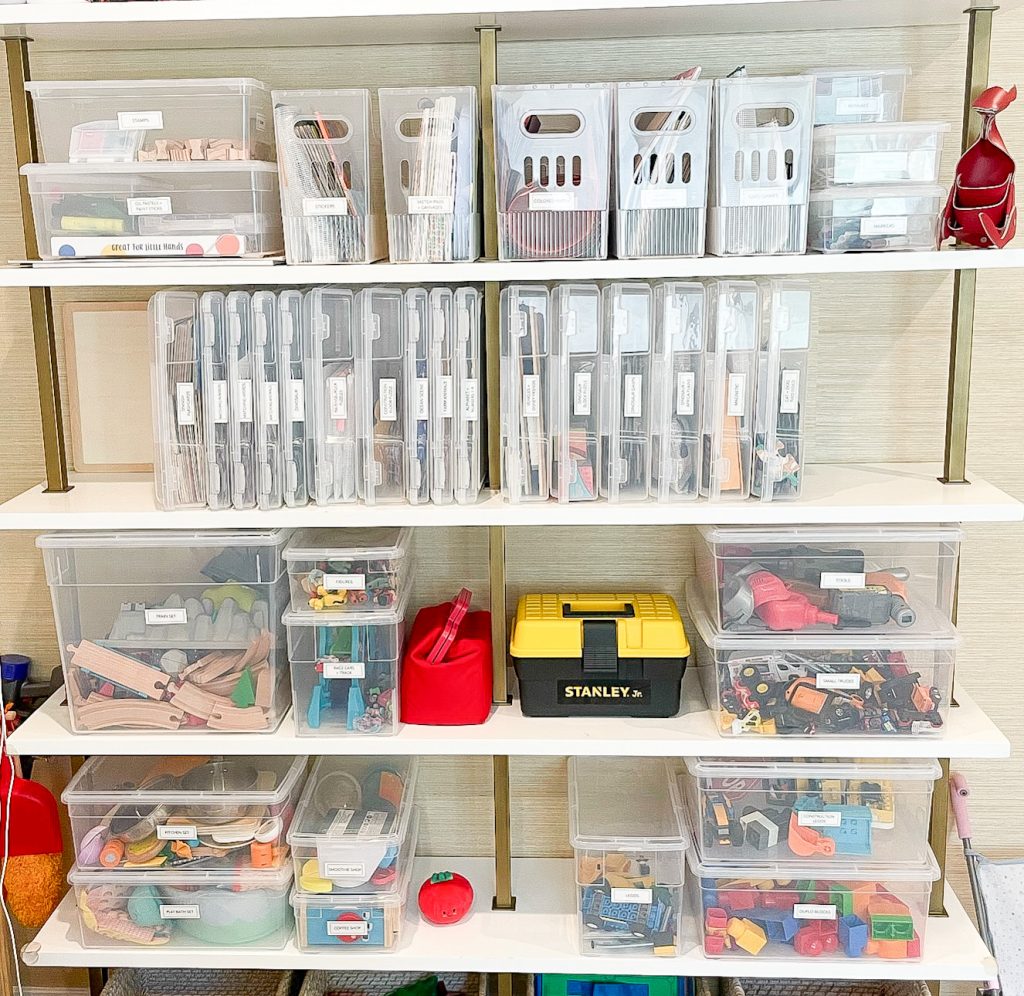Effective Systems and Solutions to Maintain Order in Your Home
As parents, one of the most challenging tasks is keeping our children’s belongings organized and clutter-free. School work, craft supplies, clothes, sports equipment and toys to name a few, can quickly accumulate creating endless piles and increased stress levels. However, with the right systems in place, organizing and decluttering kids’ things becomes an achievable task that can be maintained. In this blog post, we’ll explore practical tips and real-life solutions to support an organized space that you and your family can thrive in.
School Work and Paper Management
Managing your child’s school work and paper clutter is crucial to maintaining an organized home. Create a dedicated space, such as a file box or binder, to keep and sort important papers, completed assignments and artwork. Establish a weekly routine to go through the paper your child brings home, keeping only the most meaningful or relevant items (check out how I decide what schoolwork to keep here). Consider scanning or taking photos of artwork (Pro tip: most professional organizers use Artkive) and school projects to reduce physical clutter in your home while preserving important memories.

Craft Supplies Organization
Craft supplies can get messy and disorganized fast (insert glitter bomb) if not properly stored and organized. Use stackable bins, metal organizers or turntables with dividers to sort and store various art materials like markers, crayons and paint materials. Label each container to make it easy to put things back where they belong after use. (Pro Tip: if your child is too young to read, color code or print photos of the items belonging to each bin.) Designate a craft area with a tabletop or storage cart, making it convenient for your child to engage in creative activities while maintaining an organized space.
Clothes and Closet Solutions
An area that often gets overlooked is kids clothing and accessories. Incorporating a quarterly closet edit is a great thing to add to your homes’ decluttering goals. Here are a few great resources for consciously letting go of clothing items. Consider implementing a seasonal closet rotation to prevent overcrowding and ensure easy access to weather appropriate items. Tips to organize the closet include using all the vertical and horizontal space, place things most often used at eye-level and use matching hangers. Organization products like drawer dividers, baskets, shelf dividers and hooks maximize closet space and create designated areas for different types of clothing. As soon as you feel that your child can help with folding and putting away their laundry, start! Having them involved with their space and belongings as early as possible teaches kids responsibility and respect for their things.

Sports Equipment Storage
Sports equipment is another category that can easily take over your space with its bulky and oddly shaped nature. Dedicate a specific area, such as a garage corner or mudroom cubbies, for storing sports gear. Whatever space you choose, do your best to stick to it so that sports gear isn’t strewn about your house. , stick to it. You can use rolling storage racks like these for all the different shape equipment. Get your child involved in returning items to their designated spot after use. Regularly assess equipment for damage or items that are no longer needed, and declutter accordingly.

Toy Organization and Rotation
Toys often present the greatest challenge in maintaining an organized space for kids. This topic is big and deep, but for this post, we’ll get right to the point. Start by decluttering toys that are broken, no longer used, or have missing pieces. Categorize the remaining toys into groups like legos, action figures, cars, dress-up, etc. Bring your child into the conversation and ask if there is anything they’d like to pass on to someone else that might need. Once you edit, assign each group of toys a designated storage container like this or cubbies. Consider implementing a toy rotation system, where a portion of the toys are stored away and swapped out periodically. This approach keeps the play area fresh, reduces clutter, and encourages your child to fully engage with their toys.
Labels and Clear Systems
Labels play a vital role in helping both you, house helpers and your child maintain an organization system. Adding something as simple as labels to containers, shelves and drawers to indicate the contents and designated spots for items, helps keep the organizational structure in place. Visual cues like pictures or color-coded labels can be especially helpful for young children who may not be able to read yet (check out this label maker that prints photos, text and color). Ensure that your labeling system is clear and consistent making it easier for everyone in the family to maintain order.

End Result: A Harmonious Environment for Your Little Ones
Organizing and decluttering your children’s belongings is an ongoing process that requires your love, attention and care. Just like taking care of your kids requires energy, taking care of your home is no different. You and your family can create a harmonious space where everyone thrives, as long as you are willing to create and maintain the systems shared above. By providing your children with organized spaces for their school work, craft supplies, clothes, sports equipment, and toys, you’re fostering an environment that promotes focus, creativity, and a sense of calm. Remember that decluttering and organizing go hand in hand and the next time your kid’s things start to feel overwhelming use that feeling to start removing clutter and organizing your home in a way that works for you not against you.

